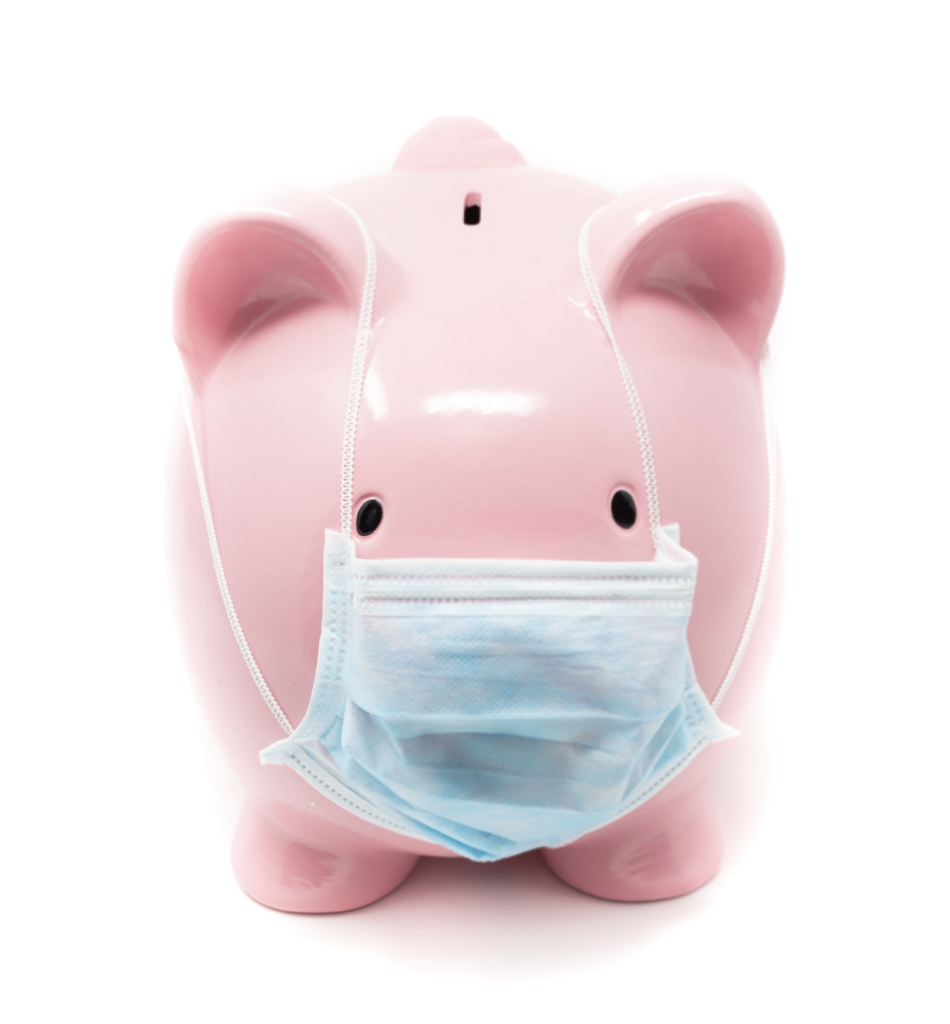
As we approach the second anniversary of the COVID-19 pandemic, the country continues to adjust to the ongoing evolution of pandemic response. While early on things were very uncertain, the availability of vaccines and increased knowledge of how to handle the impacts of a global pandemic have allowed most communities to return to some levels of pre-pandemic normalcy. However, new challenges have presented themselves including unforeseen labor shortages, even impacting the availability of many essentials and wish list items in stores this holiday season.
Throughout the COVID pandemic, banks of all sizes adjusted quickly to the needs of the communities they serve. By extending online hours, assisting with financial needs, and providing service to those impacted in the community, banks have worked consistently over the last two years to help ensure that their customers and borrowers can remain financially stable during the pandemic. None of us will forget Paycheck Protection Program (PPP) loans any time soon.
Banks can receive CRA credit for certain pandemic response activities that supported relief and recovery efforts. The banking agencies have provided several issuances regarding tracking bank activities for CRA consideration, including issuing interagency CRA FAQs related to COVID-19 (“Interagency COVID FAQs”).
Not All Disasters Are Equal
For many years, banks have been able to receive CRA consideration for activities conducted in support of disaster recovery in areas that have been designated as a major disaster area by the Federal Emergency Management Agency (FEMA). These major disaster designations are approved by the President and ensure a variety of aid to areas affected by natural and other major disasters.
Banks can participate in disaster recovery under traditional disaster designations by supporting revitalization and stabilization efforts that attract new, or retain existing, businesses and residents in a designated disaster area. As with all things CRA, greater weight is given to activities that are most responsive to community development needs, including the needs of low- and moderate-income individuals (“LMI”) or geographies. Banks can receive CRA credit for supporting disaster recovery for a period of 36 months after the official FEMA declaration, excluding certain types of activities such as debris removal and emergency protective measures.
We all know the global pandemic was a much different disaster than other natural disasters. As such, the banking agencies adopted a modified approach for handling bank response to the COVID pandemic for CRA consideration. In their Interagency COVID FAQs, the banking agencies established a new timeline for bank response to the pandemic. A national emergency regarding the pandemic was initially declared on March 13, 2020, and in the months following, each state was designated by FEMA as a major disaster area due to the pandemic. However, unlike a traditional disaster declaration, banks can receive CRA consideration for pandemic response activities throughout the period the national emergency remains in effect and an additional six months after the national emergency ends, when declared by the President.
As with all areas of CRA, it is critical that banks gather sufficient details on any pandemic response and relief activities to demonstrate both the quality and quantity of the activities undertaken and their responsiveness to community needs.
Under the pandemic disaster designation, banks can still receive credit for activities that revitalize and stabilize an area, particularly activities for LMI people or geographies or other distressed and underserved areas. These activities also include protection of public health and safety and have been expanded to include emergency protective measures, which are usually excluded under traditional disaster designations. The Interagency COVID FAQs provide a list of specific actions that banks can undertake that will receive positive CRA consideration including support for the healthcare infrastructure, hospitals, other medical facilities, and temporary medical facilities. Banks can also receive consideration for activities that support the purchase and distribution of personal protective equipment, provision of emergency food supplies, and assisting government efforts for emergency management and communications of general health and safety information to the public.
Aiding Impacted Customers
On March 19, 2020, the banking agencies issued their first statement encouraging financial institutions to work with affected customers and communities, particularly those who are LMI. Following this statement, the agencies issued several other guidance documents to support bank efforts in aiding customers impacted by the pandemic. In the Interagency COVID FAQs, the banking agencies provide a long list of activities that banks can deploy to assist customers.
At the onset of the pandemic, most banks were forced to close their lobbies as part of the national shut down to prevent the spread of COVID. During this initial response, banks extended drive-thru and call center hours and maximized the use of mobile and online banking services to maintain access to banking services. The Interagency COVID FAQs outline that service adjustments such as waiving ATM, overdraft, early withdrawal, and other fees and easing check-cashing restrictions, including for government stimulus checks, will be viewed favorably under CRA.
Actions taken by banks to address borrowers impacted by the pandemic due to shutdowns and furloughs are also considered responsive under CRA. Many banks worked with consumers, small businesses, and homeowners to modify and restructure loans to avoid default and foreclosure. Activities such as increasing credit limits, deploying short-term credit products, waiving loan fees, making payment accommodations, and easing underwriting for new loans for COVID-impacted borrowers can all receive positive consideration during the bank’s next CRA examination.

In addition, during the pandemic, banks have worked with existing and new community partners to provide essential services and support affected individuals. While the provision of health care and emergency food supplies are considered directly responsive under the disaster designation, the Interagency COVID FAQs also outline other community development activities that fit under CRA. Activities such as supporting digital access for LMI individuals or providing financing and other economic development activities for small businesses and small farms are considered responsive. Also, the need for traditional CRA-qualified community services such as childcare for LMI essential workers, food banks, homeless shelters, domestic violence shelters, rehab and recovery programs, and utility assistance programs only intensified during the pandemic.
As ongoing foreclosure and eviction financial assistance programs continue to wind down, the need for bank support for impacted homeowners and renters will grow. Activities that maintain housing stability, especially for LMI individuals, such as loan forbearance, reduced payments, loan modifications, and debt restructuring will be critical. Also, banks can provide investments and services to nonprofits and other third parties that provide housing support to LMI individuals as part of CRA outreach. The Interagency COVID FAQs also clarified in March 2021 that CRA-qualified service conducted virtually, such as financial literacy and homeownership counseling, also qualifies.
Bank efforts should be focused on activities within the bank’s CRA assessment areas first. If needs are sufficiently met in the bank’s assessment areas, then favorable consideration may also be given for activities in a broader statewide or regional area that includes the bank’s assessment areas as well. Unlike in the 2016 interagency statement from the banking agencies in support of hurricane recovery for Puerto Rico and the U.S. Virgin Islands, the Interagency COVID FAQs state that bank support for pandemic response in other areas outside of those listed in the guidance will not receive CRA consideration at the bank’s next examination.
PPP Loans and CRA Tracking
One of the most immediate and expansive initial responses to the pandemic was the rapid creation and deployment of the PPP in March 2020. Signed into law as part of the CARES Act, the PPP amended Section 7(a) of the Small Business Act to include a new 100 percent guaranteed temporary loan program administered by the SBA. PPP loans were low-cost, qualifying forgivable loans to small businesses to help cover payroll costs, interest on mortgages, rent, and utilities during the economic shutdowns caused by the pandemic. The initial round of PPP loans opened in April 2020 on a first-come, first-served basis and funds were quickly exhausted. A second round of PPP funding was authorized in January 2021 with loan applications open through May 31, 2021.

With the opening of PPP loans to small businesses nationally, banks who were experienced with SBA lending were crushed by the initial frenzy to submit applications before limited funding was exhausted. Similarly, hundreds of banks who were not existing SBA lenders were challenged with ramping up a new process for accepting and processing PPP applications with only a few days’ notice. Even while working remotely, banks were able to rise to this challenge, processing thousands of PPP applications in only a few weeks, supporting the survival of many businesses during the pandemic. Many banks reallocated non-lending staff to assist with application submission and processing to ensure as many impacted small businesses were helped as possible.
Initially, CRA discussions around PPP loans wavered between reporting all PPP loans only as small business loans to reporting all PPP loans as community development loans, as the PPP program was designed to respond to a national disaster to stabilize impacted small businesses. However, with the issuance of the Interagency COVID FAQs, the banking agencies defined how PPP loans will be considered during a bank’s next CRA examination.
For banks designated as large banks under the CRA, PPP loans should be treated as any other small business loan. The bank must first determine which PPP loans meet the regulatory definition of a small business loan for reporting on the bank’s CRA Loan Register and include those loans in their next annual filing. While the PPP loan application did not require the borrower to submit, or the bank to review, financial information as part of the application process, the bank can choose to report the loan on its CRA Loan Register without gross annual revenues or alternatively, can ask for supplemental information from the borrower or rely on existing financial information from prior transactions with the borrower to complete that information.
Banks can receive CRA credit for certain pandemic response activities that supported relief and recovery efforts.
The banking agencies reaffirmed in the Interagency COVID FAQs that they understand the unique circumstances affecting borrowers and banks due to the pandemic and will not penalize a bank for reporting a large volume of PPP loans without gross annual revenues. PPP loans will be evaluated during the bank’s CRA examination as part of the CRA Lending Test. The Interagency COVID FAQs also clarify that banks should not report any PPP Loan that was rescinded and returned to the bank as allowed under the PPP program.
While banks provided hours of service to support borrowers under the PPP program, the banking agencies decided that loan processing and servicing activities related to PPP lending should not be included as CRA-qualified service. The agencies generally consider the building of new lending platforms and providing technical assistance to borrowers during a loan application process to be activities banks engage in during the normal course of business and will not receive CRA Service Test credit.
For any PPP loan with an origination amount over $1 million, banks can evaluate those loans under existing CRA standards for qualification as a community development loan. One important clarification provided in the March 2021 update to the Interagency COVID FAQs greatly simplified this process. In that update, the banking agencies noted that a PPP loan originated in a LMI geography or a distressed/underserved nonmetropolitan middle-income geography will automatically be considered as an eligible community development loan. The banking agencies reaffirmed that PPP loans within these geographies are considered activities that revitalize or stabilize by helping to attract new, or retain existing, jobs, businesses and residents.
For banks that are not designated as a large bank under CRA or do not file a CRA Loan Register, the same guidance can be applied to existing bank policies and procedures for identifying small business and community development loans. Also, the Interagency COVID FAQs state that banks can apply the same guidance to loans originated under the Main Street Lending program when considering CRA qualification.

What’s Next?
As with the general pandemic response, the process for tracking pandemic relief efforts to maximize CRA consideration is ongoing. In the coming year, many banks will be experiencing their first CRA examination since the start of the pandemic. As with all areas of CRA, it is critical that banks gather sufficient details on any pandemic response and relief activities to demonstrate both the quality and quantity of activities understaken and their responsiveness to community needs. Banks have been and will continue to be an integral part of the nation’s pandemic recovery. By following the guidance outlined in the Interagency COVID FAQs, banks will ensure that these efforts are recognized during their next CRA exam.
ABOUT THE AUTHOR Brian Waters, CRCM, is the President, COO and Co-Founder of findCRA, which offers both online services for banks to identify and document CRA-qualified nonprofit relationships and build instant performance context, as well as traditional CRA consulting and training services. He has over 20 years of experience in banking compliance and community development and is a resident of Louisville, KY. Contact him at brian@findCRA.com.
This article originally appeared in the January / February 2022 issue of the ABA Bank Compliance Magazine published by the American Bankers Association.